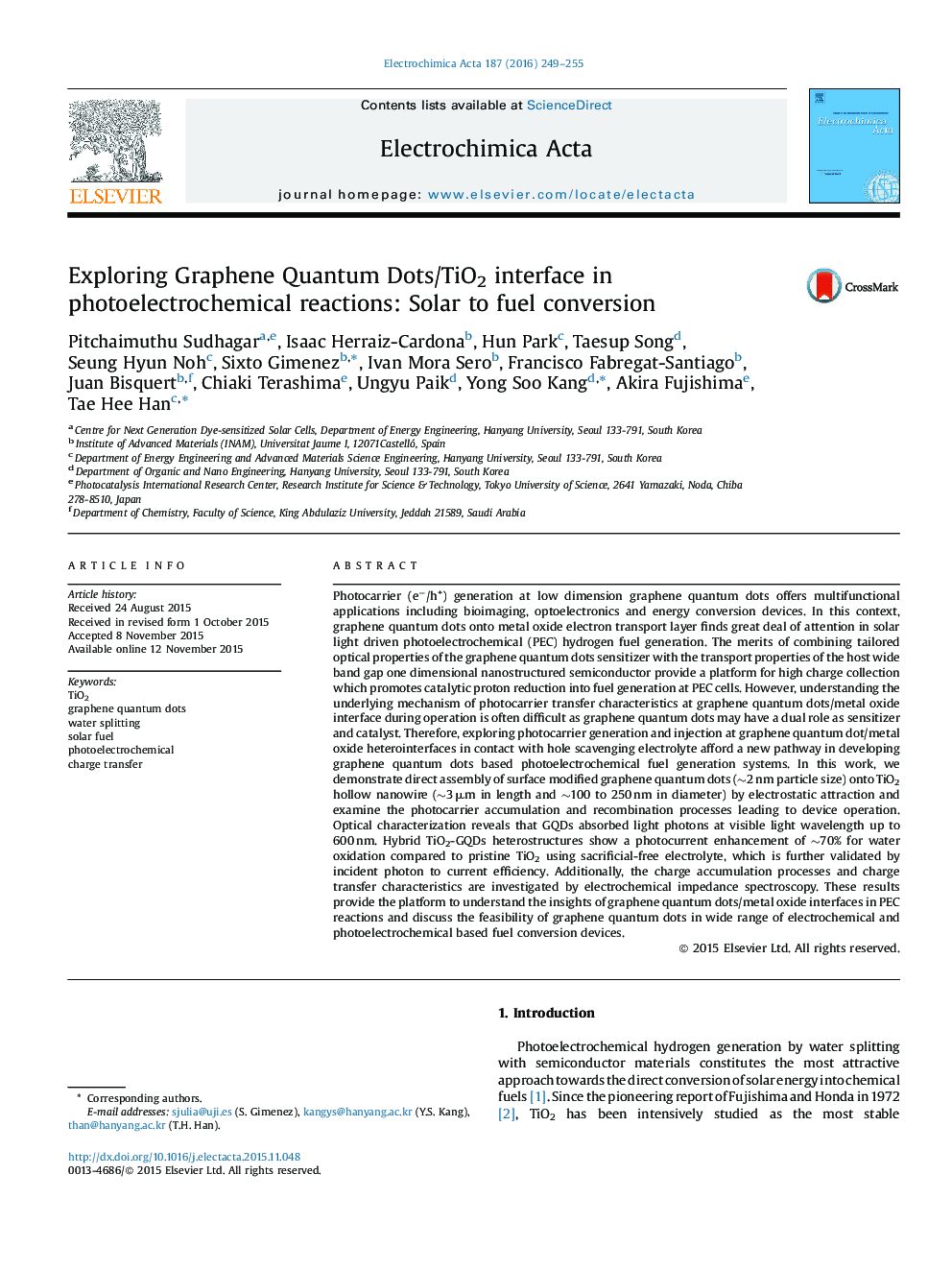| کد مقاله | کد نشریه | سال انتشار | مقاله انگلیسی | نسخه تمام متن |
|---|---|---|---|---|
| 183267 | 459543 | 2016 | 7 صفحه PDF | دانلود رایگان |

• Low dimension ∼5 nm graphene quantum dots nanoparticles were synthesized using chemical exfoliation method.
• One dimensional TiO2 hallow nanowire is grown directly onto conducting substrates using ZnO nanowire as sacrificial template.
• The merits of optical properties of the graphene quantum dots sensitizer with the transport properties of the host 1-D TiO2 nanowire were combined and demonstrate as photoanode in photoelectrochemical hydrogen generation.
• A photocurrent enhancement of ∼70% at pristine TiO2 by graphene quantum dots was achieved through photoelectrocatalytic water oxidation using sacrificial-free electrolyte.
• The underlying mechanism of photocharge carrier transfer characteristics at graphene quantum dots/TiO2 interface is studied using electrochemical impedance spectroscopy.
Photocarrier (e−/h+) generation at low dimension graphene quantum dots offers multifunctional applications including bioimaging, optoelectronics and energy conversion devices. In this context, graphene quantum dots onto metal oxide electron transport layer finds great deal of attention in solar light driven photoelectrochemical (PEC) hydrogen fuel generation. The merits of combining tailored optical properties of the graphene quantum dots sensitizer with the transport properties of the host wide band gap one dimensional nanostructured semiconductor provide a platform for high charge collection which promotes catalytic proton reduction into fuel generation at PEC cells. However, understanding the underlying mechanism of photocarrier transfer characteristics at graphene quantum dots/metal oxide interface during operation is often difficult as graphene quantum dots may have a dual role as sensitizer and catalyst. Therefore, exploring photocarrier generation and injection at graphene quantum dot/metal oxide heterointerfaces in contact with hole scavenging electrolyte afford a new pathway in developing graphene quantum dots based photoelectrochemical fuel generation systems. In this work, we demonstrate direct assembly of surface modified graphene quantum dots (∼2 nm particle size) onto TiO2 hollow nanowire (∼3 μm in length and ∼100 to 250 nm in diameter) by electrostatic attraction and examine the photocarrier accumulation and recombination processes leading to device operation. Optical characterization reveals that GQDs absorbed light photons at visible light wavelength up to 600 nm. Hybrid TiO2-GQDs heterostructures show a photocurrent enhancement of ∼70% for water oxidation compared to pristine TiO2 using sacrificial-free electrolyte, which is further validated by incident photon to current efficiency. Additionally, the charge accumulation processes and charge transfer characteristics are investigated by electrochemical impedance spectroscopy. These results provide the platform to understand the insights of graphene quantum dots/metal oxide interfaces in PEC reactions and discuss the feasibility of graphene quantum dots in wide range of electrochemical and photoelectrochemical based fuel conversion devices.
Figure optionsDownload as PowerPoint slide
Journal: Electrochimica Acta - Volume 187, 1 January 2016, Pages 249–255